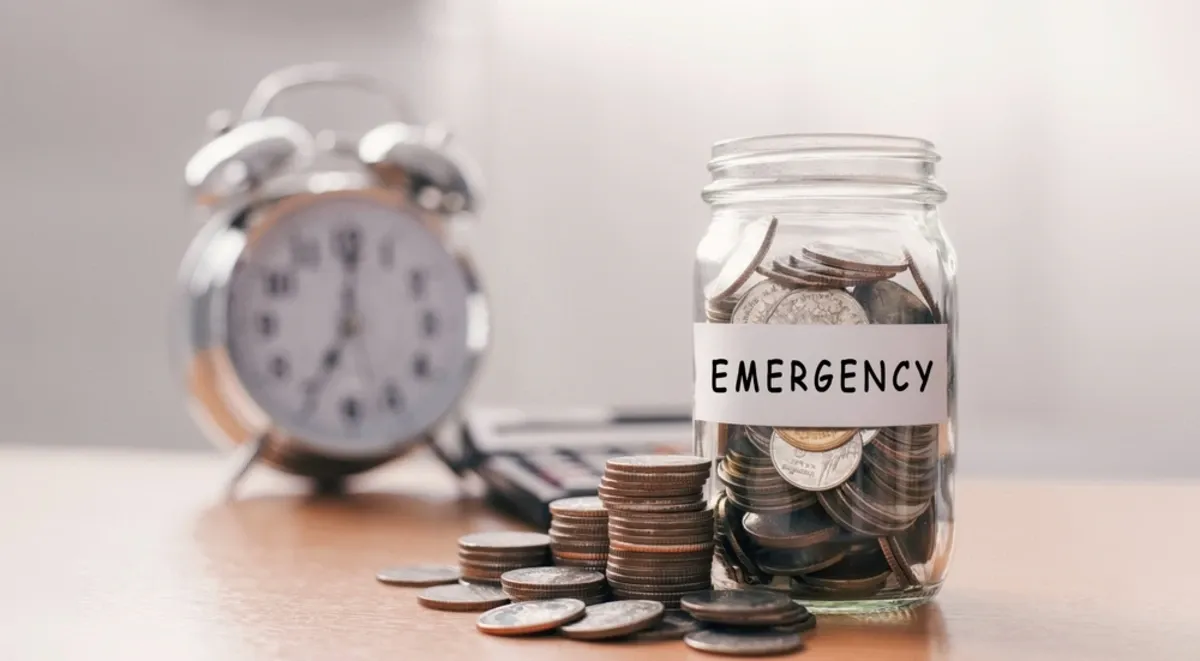Personal Finance News
Emergency Fund: What it is and steps to build your fund
.png)
5 min read | Updated on October 15, 2024, 11:58 IST
SUMMARY
Building an emergency fund requires a disciplined approach to managing money. It also needs a well-planned financial strategy to build savings for emergencies.

Emergency Fund: Why You Need One And How To Build It
An emergency fund provides a safety net during unexpected life events. Whether it’s unforeseen medical bills, a sudden vehicle or house repair, or the loss of a job, having funds set aside for emergencies can help you avoid debt or high-interest loans.
Building an emergency fund requires a disciplined approach to managing money. It also needs a well-planned financial strategy to build savings for emergencies.
Why do I need an emergency fund?
An emergency fund acts as a financial buffer, helping you stay afloat during a crisis without having to rely on borrowing. Life is full of uncertainties, and expenses can arise without warning. Such emergencies may range from medical emergencies, home renovation, vehicle repairs or unexpected job loss.
Having an emergency fund can prevent you from using high-interest loans or credit cards to cover these expenses, especially if you have outstanding loan amounts to pay.
How much should I save?
If you are just starting out, aim to set aside an amount that can cover a crucial bill or emergency expense, say ₹40,000. This can provide immediate help for unexpected financial shocks while you work towards a larger goal.
A more comprehensive emergency fund should be able to cover three to six months’ worth of living expenses. The exact amount depends on your financial situation, lifestyle and job security.
If you are salaried, a three to six-month cushion is generally sufficient, but those in more unpredictable professions, such as freelancing, may want to save even more.
Emergency savings: How to build your fund
Determine how much you need
The first step in building an emergency fund is to determine how much is appropriate for your specific needs. A common rule of thumb is to have six to nine months of your fixed monthly expenses saved. However, this may vary depending on factors like your financial obligations, lifestyle, and family situation.
- For a double-income family with monthly expenses of ₹50,000, an emergency fund of six months’ expenses — around ₹3 lakh — would be ideal.
- A single-income household with similar expenses may need a larger fund, around 10 to 12 months’ worth of expenses — ₹5 lakh to ₹6 lakh — to ensure financial stability.
To calculate your minimum savings target, focus on necessary expenses such as rent, EMIs and utility bills.
Choose the right investment option
You should be able to easily access and safeguard your emergency savings from market fluctuations. You may consider multiple investment options depending on your risk appetite. However, experts advise choosing risk and steady return offering investments for an emergency fund. Such investments could range from high-yield savings accounts to debt mutual funds.
Automate your savings
Building an emergency fund requires consistency, and automating your savings can make this easier. Set up automatic transfers from your primary bank account to your emergency savings account each month, ensuring that a portion of your income is directed towards your fund without requiring manual effort. You can also consider setting up a recurring deposit or SIP for automatic deductions.
Sign up for comprehensive insurance
While an emergency fund is essential, having comprehensive health insurance can further safeguard your finances. In India, rising healthcare costs mean that a few days in the hospital could strain your budget. A good insurance plan can help cover these unexpected medical costs, while your emergency fund can be reserved for other crises.
However, remember that insurance is not a replacement for an emergency fund. It complements your savings by covering specific, often medical, expenses, while your emergency fund is for broader financial protection.
Use your emergency fund wisely
It’s important to use your emergency savings only for genuine emergencies, such as medical crises, essential home repairs or periods of unemployment. Establishing clear guidelines on when and how to access these funds can prevent you from depleting your savings prematurely on non-essential purchases.
Emergency savings: 3 major don’ts
- Don’t live beyond your means: Avoid overspending, even as your income grows. Lifestyle inflation can quickly erode your emergency savings.
- Don’t fall into the debt trap: Building up credit card debt or taking out loans beyond your capacity to repay can lead to a financial spiral. Maintaining an emergency fund can help you avoid this by providing a financial cushion when unexpected expenses arise.
- Don’t rely solely on health insurance: Many people mistakenly treat health insurance as a substitute for an emergency fund. While health insurance covers medical expenses, it won’t help with other financial needs, like home repairs or income loss, making an emergency fund a necessary addition.
Final words
Overall, an emergency fund can help you navigate unexpected challenges with confidence. By determining your savings goal, choosing the right investment options and maintaining disciplined saving habits, you can build a strong emergency fund that provides peace of mind in uncertain times.
By signing up you agree to Upstox’s Terms & Conditions
About The Author
Next Story

